Monochromatic planting scheme
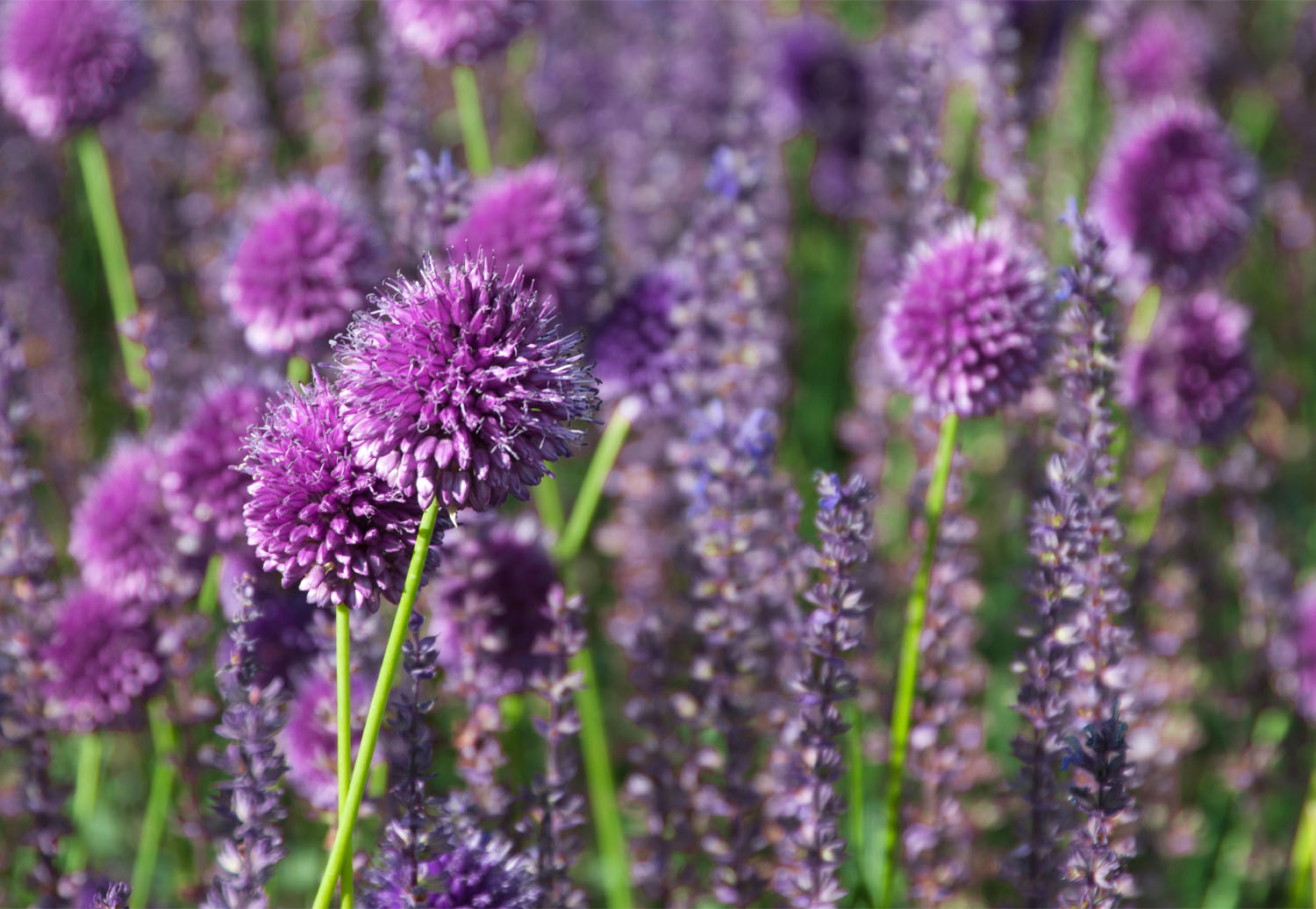

Monochromatic planting scheme
A monochromatic garden mixes shades of a single colour to create an aesthetically pleasing landscape with visual impact. No garden can be truly monochromatic, with many variations in intensity of a single colour and predominantly green foliage on most plants, however the mixture of hues and textures creates a landscape with visual interest. The emphasis in a monochromatic garden is not necessarily on a single hue but on many shades within that colour spectrum. By taking advantage of plants of different heights, shapes and structures, it is possible to create depth and movement in your planting scheme.
A monochromatic planting scheme offers a wide range of shades and tints within the same colour family. For example, pairing a pale light blue with a deeper, richer blue can create a beautiful contrast that enhances the overall aesthetic of the garden. These variations in tone add complexity and visual interest.
Single-colour gardens are at their best in enclosed spaces. An enclosed garden can accentuate the impact of colour, making the area appear larger and brighter, allowing your chosen colour scheme to take centre stage.
Monochromatic gardens can also make a positive contribution to biodiversity. Focusing on colours such Purple and blue, which are particularly appealing to bees and other pollinators, help to enrich the garden’s ecosystem and contribute to the overall health of the environment.
Selecting plants for a monochromatic garden requires careful consideration to achieve a balanced design. Each chosen plant contributes its own unique hue and texture.
Scabiosa ‘Butterfly Blue’ features with its delicate lavender-blue flowers, while Lupinus ‘The Governor’ adds depth with its tall spikes of rich indigo flowers. Perovskia atriplicifolia presents silvery-blue foliage and airy spikes of blue flowers, adding character to the landscape.
Echinops bannaticus ‘Taplow Blue’ offers steel-blue spherical flower heads on sturdy stems, creating architectural interest. Campanula portenschlagiana Helps to soften the border of the plan with its abundance of purple-blue bell-shaped flowers.
Erysimum ‘Bowles Mauve’ contributes its clusters of long-lasting purple-mauve flowers, while Eryngium x zabelii ‘Big Blue’ brings textural interest with its spiky steel-blue flower heads and metallic blue stems.
Verbena bonariensis adds a vertical element to the garden with its slender stems topped with clusters of small purple flowers, which attract butterflies and pollinators. Lavandula angustifolia, also known as English lavender, produces fragrant purple-blue flowers and aromatic foliage, adding a sensory element to the garden.
Salvia nemorosa ‘Caradonna’ with its spikes of purple-blue flowers atop dark stems, creates contrast in the garden background. Allium ‘Purple Sensation’ adds unique character with its spherical purple flower heads held aloft on tall stems, while Liriope muscari provides ground cover with its grass-like foliage and spikes of small purple-purple flowers.
Completing the monochromatic scheme is Syringa vulgaris ‘Charles Joly’, a classic lilac variety with deep purple-red flowers that infuse the garden with a pleasant fragrance in late spring.
With careful planning and careful selection of plant species, a monochromatic garden can be designed to give colour to a green space, bringing fragrance and life to the garden itself.
1 Verbena bonariensis 2 Echinops bannaticus ‘Taplow Blue’ 3 Lupinus ‘The Governor’ 4 Syringa vulgaris ‘Charles Joly’ 5 Allium ‘Purple Sensation’ 6 Perovskia atriplicifolia 7 Lavandula angustifolia 8 Erysimum ‘Bowles Mauve’ 9 Eryngium x zabelii ‘Big Blue’ 10 Salvia nemorosa ‘Caradonna’ 11 Scabiosa ‘Butterfly Blue’ 12 Liriope muscari 13 Campanula portenschlagiana
1 Verbena bonariensis 2 Echinops bannaticus ‘Taplow Blue’ 3 Lupinus ‘The Governor’ 4 Syringa vulgaris ‘Charles Joly’ 5 Allium ‘Purple Sensation’ 6 Perovskia atriplicifolia 7 Lavandula angustifolia 8 Erysimum ‘Bowles Mauve’ 9 Eryngium x zabelii ‘Big Blue’ 10 Salvia nemorosa ‘Caradonna’ 11 Scabiosa ‘Butterfly Blue’ 12 Liriope muscari 13 Campanula portenschlagiana

①
Verbena bonariensis
A sun-loving perennial that has tall branching stems with flattened heads of lilac-purple flowers. Verbena bonariensis works well in a prairie-style planting scheme alongside tall grasses and can be positioned in any part of a sunny border.
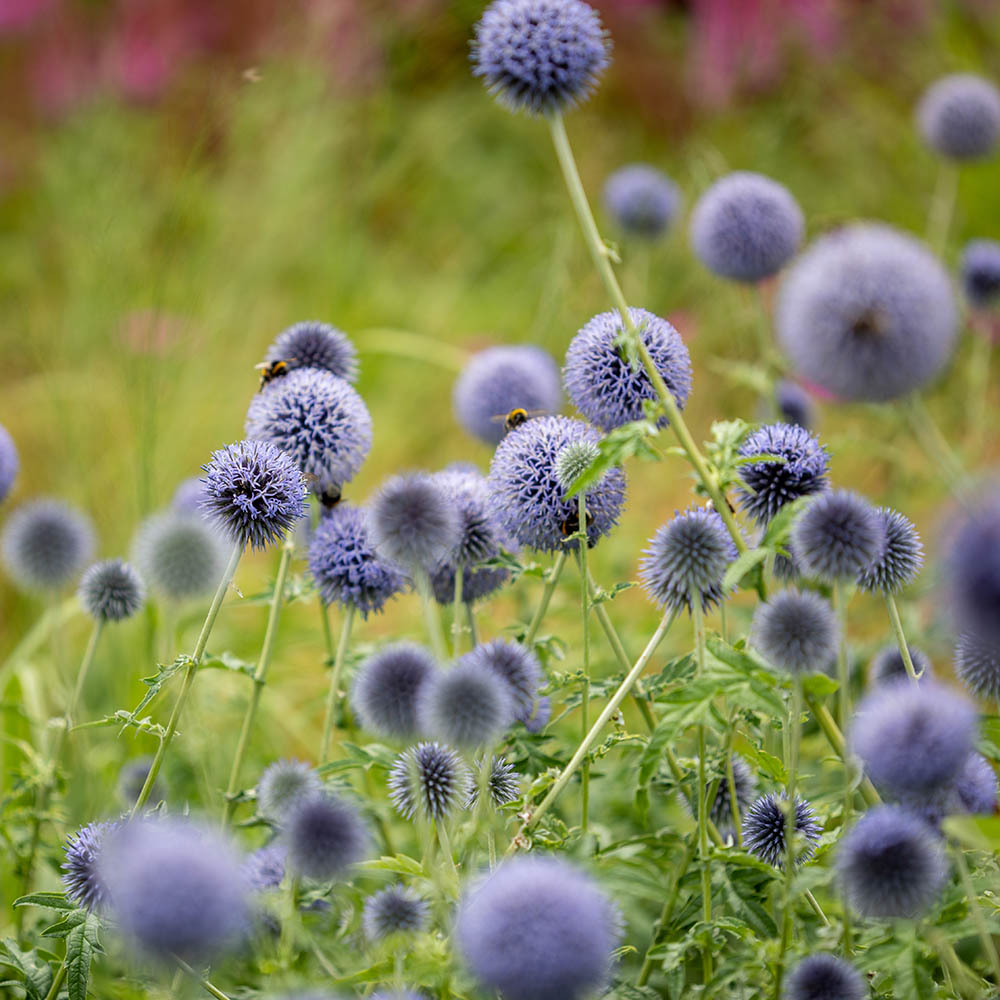
②
Echinops bannaticus ‘Taplow Blue’
An upright herbaceous perennial, with prickly leaves and coarse metallic blue flowers which bloom from July to September. Grows best in full sun or partial shade, and grows to a height of 1-1.5m. It makes an excellent choice for the back of a sunny border.
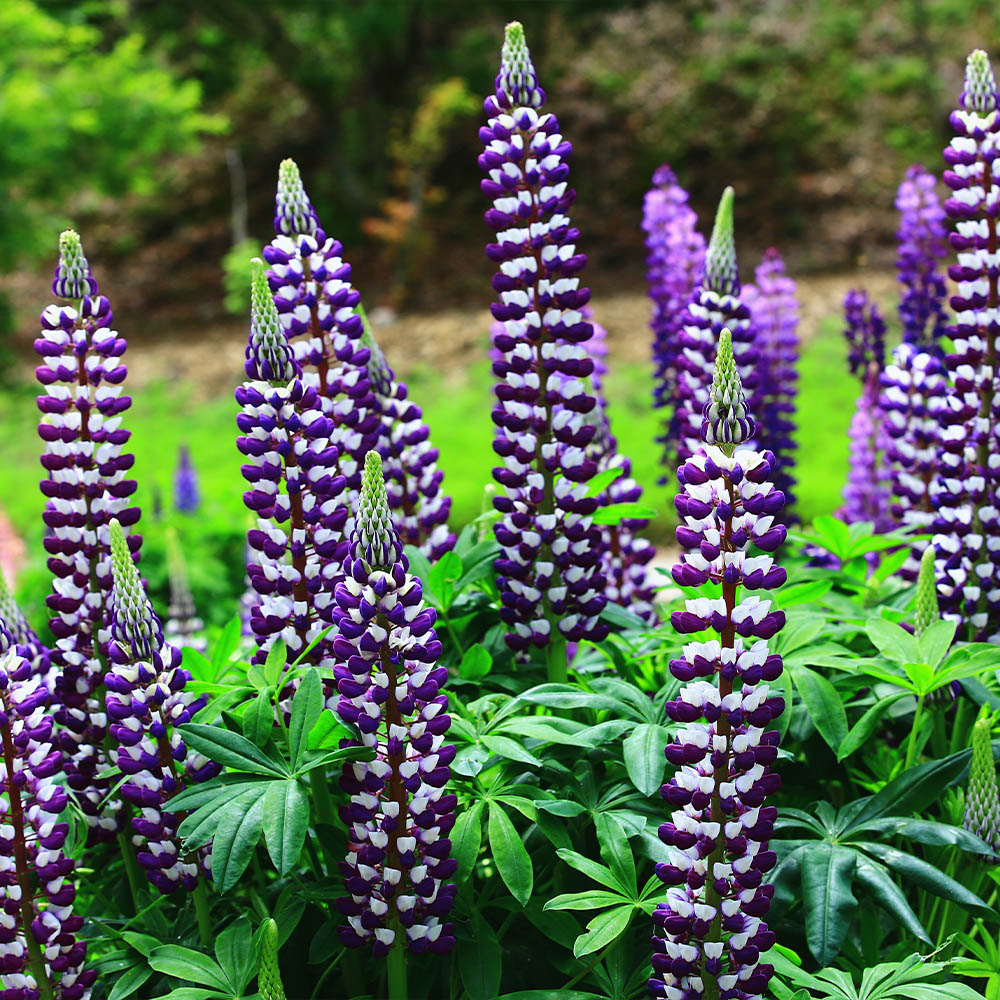
③
Lupinus ‘The Governor’
A striking perennial that features tall spikes with densely packed, deep indigo-blue flowers and contrasting white petals. Adds vertical interest to flower borders and mixed perennial beds. Lupinus ‘The Governor’ grows to a height of 90cm, it thrives in full sun to partial shade, and prefers well-drained soil for optimal growth.
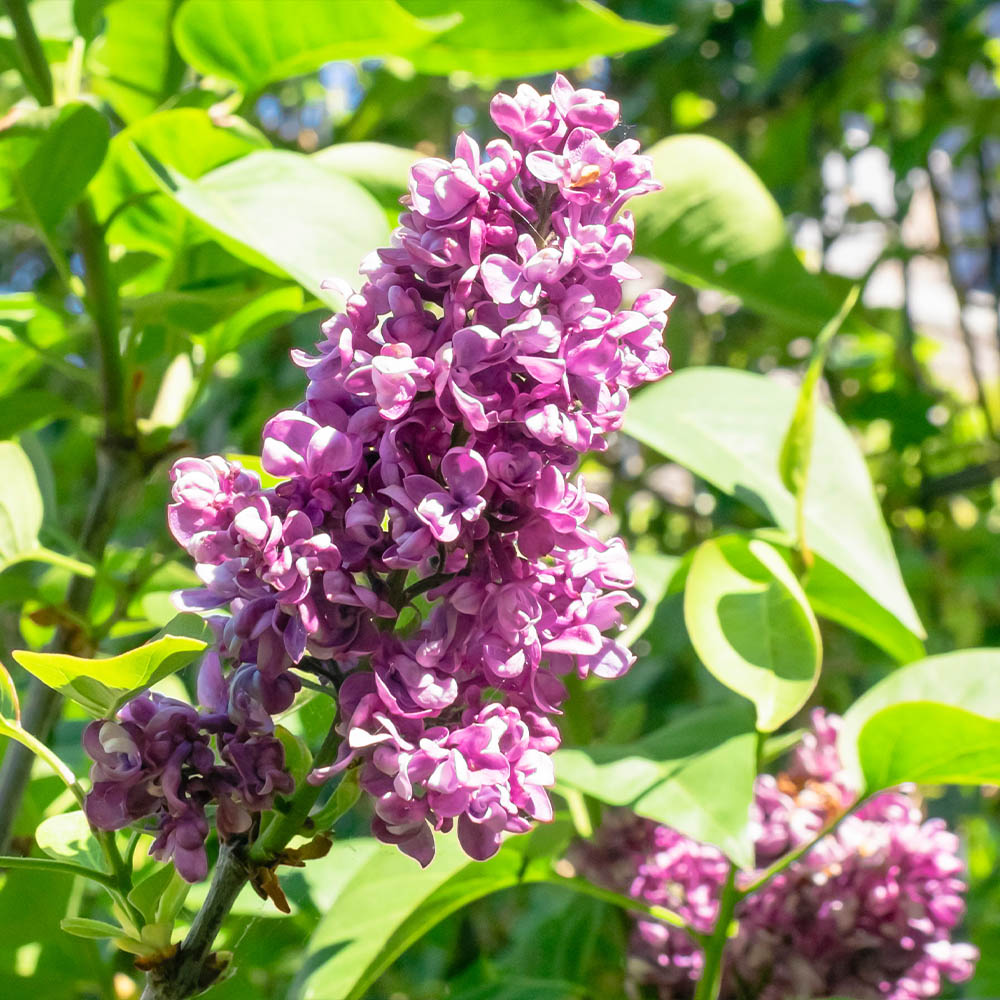
④
Syringa vulgaris ‘Charles Joly’
An upright deciduous shrub with showy deep purple flowers which stand out against its dark green, heart-shaped foliage. Thrives in full sun and well-drained soil. Syringa vulgaris ‘Charles Joly’ can be grown into a large bush or tree, if you prune it after it flowers it maintains its shape and encourage more blooms in the following year. Adds structure to mixed borders and beds.
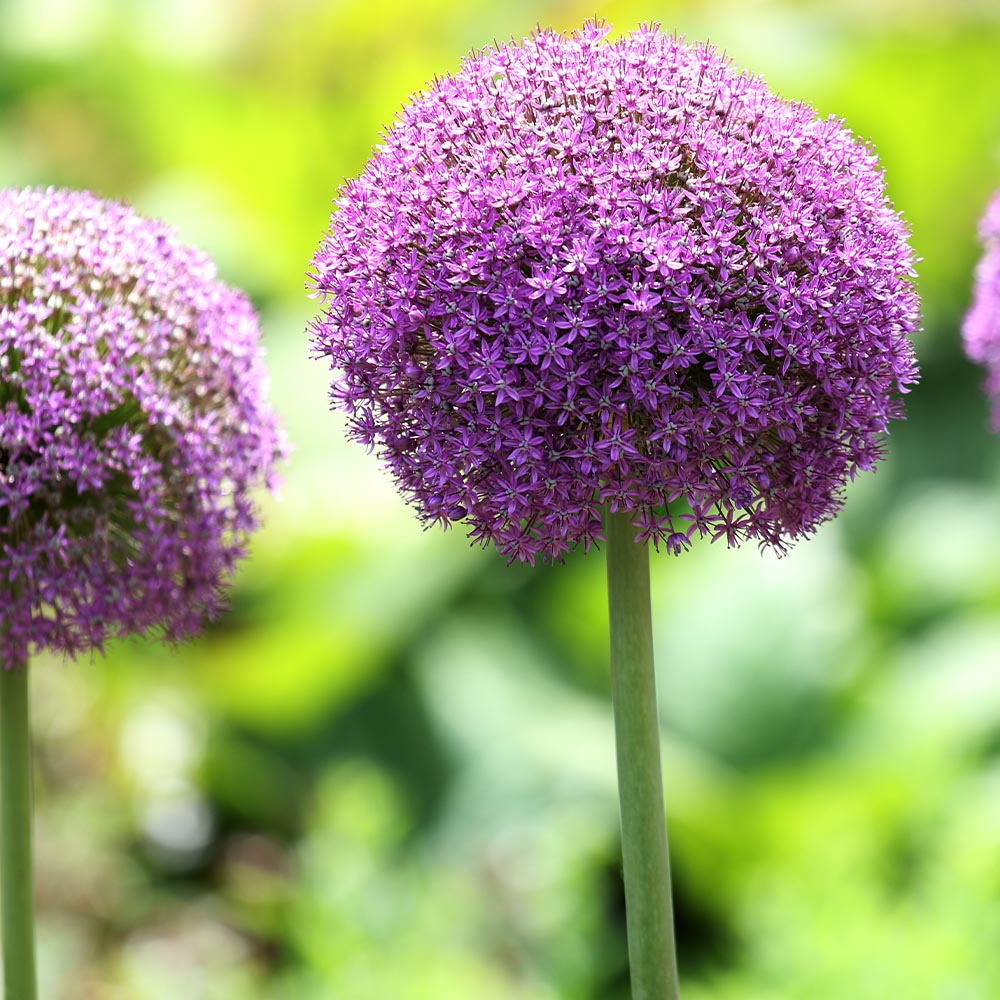
⑤
Allium ‘Purple Sensation’
A perennial with striking purple flowerheads on tall stems, with up to 50 tiny star-shaped flowers during the summer. Ideal grown in a large clump in a sunny border. As they grow up to 1m tall, they are best planted at the back of a border to add height.
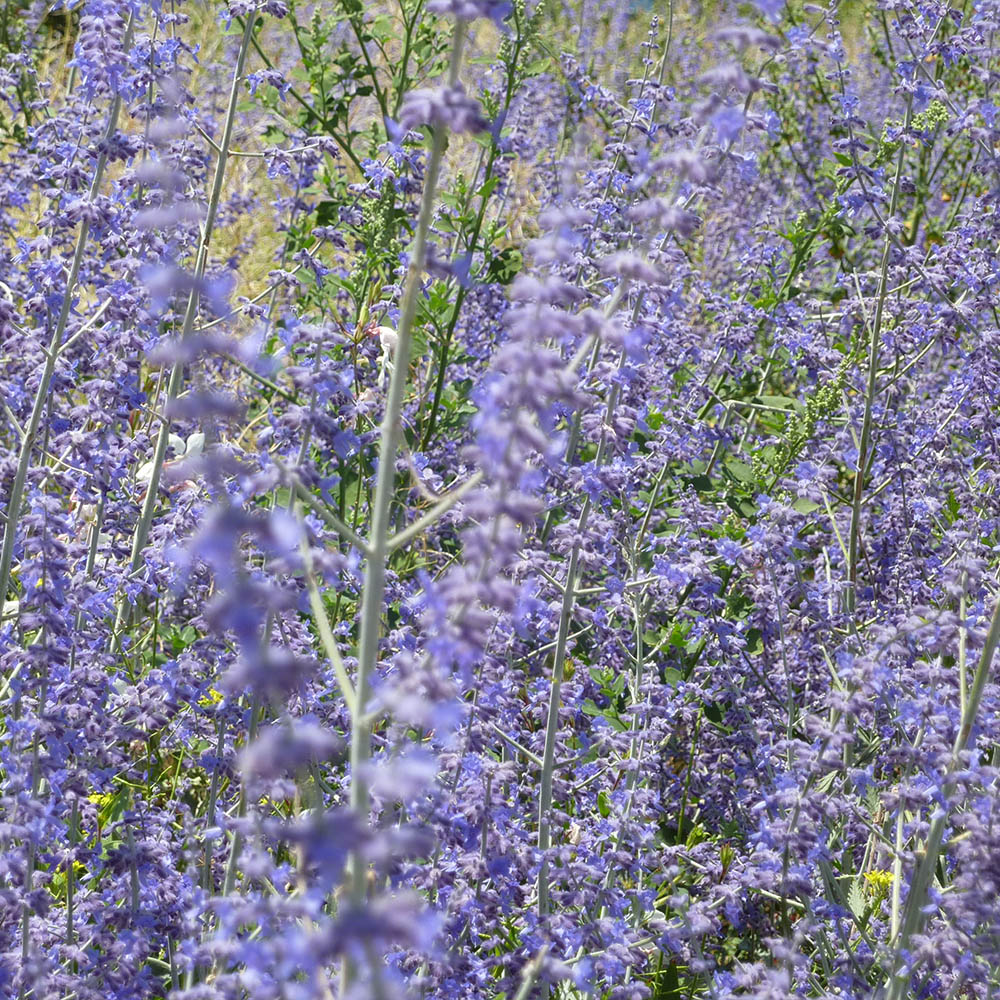
⑥
Perovskia atriplicifolia
A perennial that produces masses of lavender flowers from July to October. It grows to around 1.2m tall and prefers full sun and well-drained soil for optimal growth. It attracts bees, butterflies and other pollinators to its nectar-rich flowers.
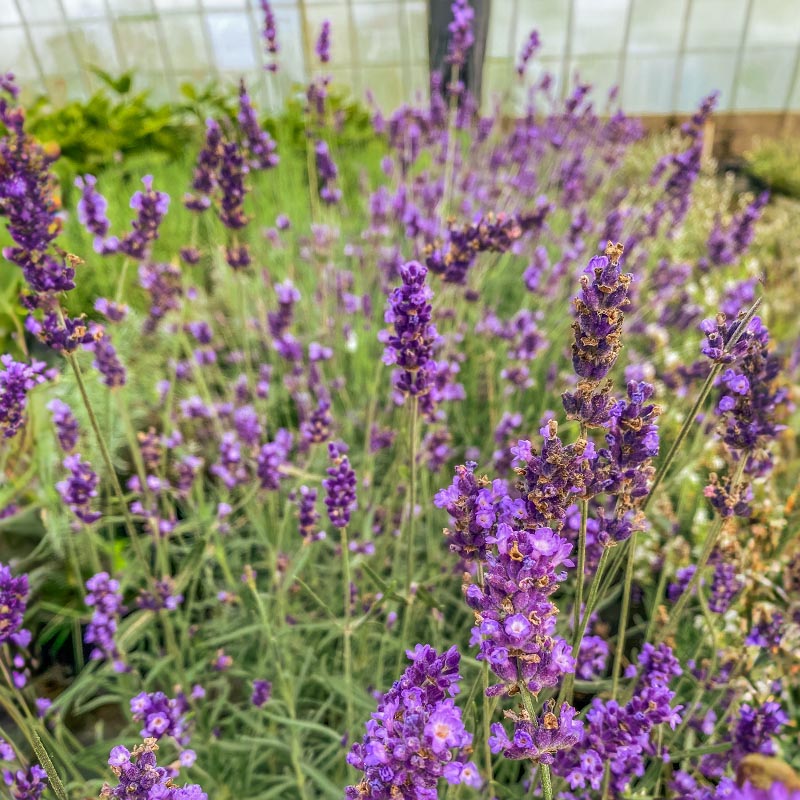
⑦
Lavandula angustifolia
A bushy, aromatic shrub with grey-green leaves and long stalks bearing dense spikes of violet flowers in summer. Lavandula angustifolia is great for edging pathways.
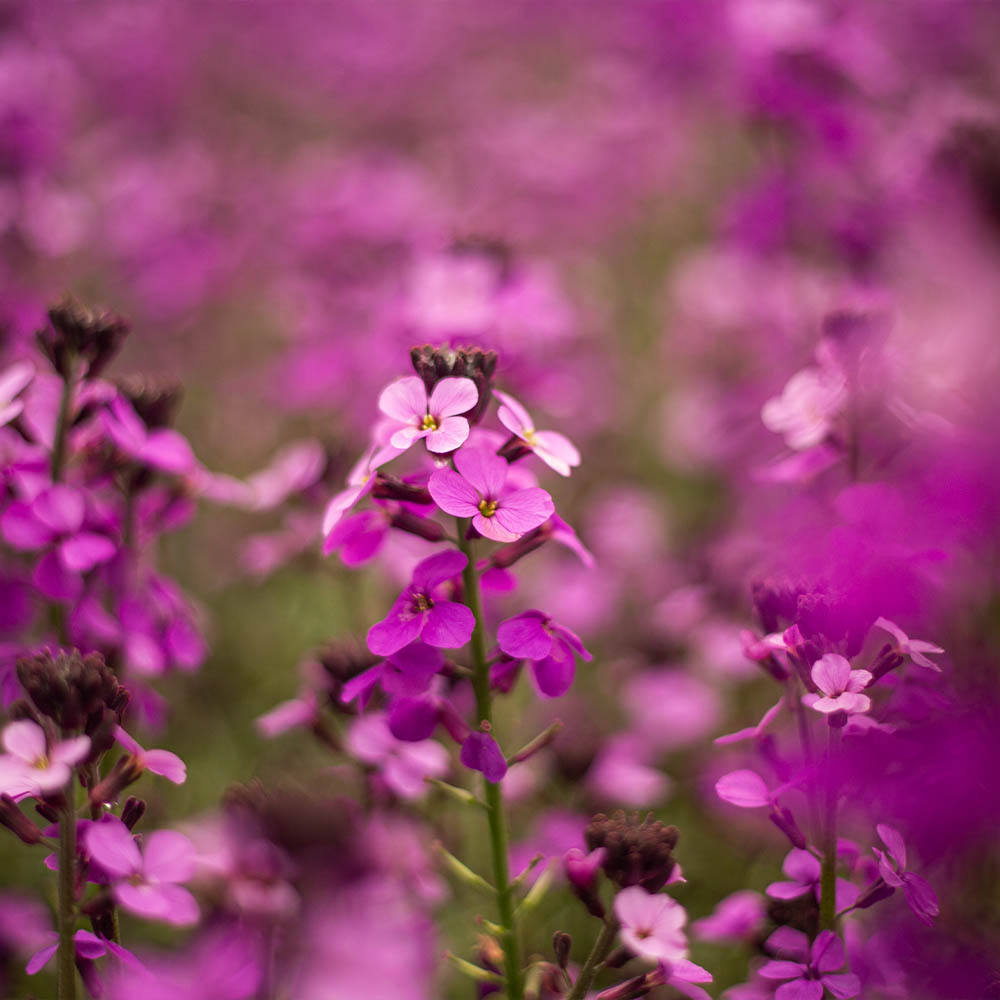
⑧
Erysimum ‘Bowles’s Mauve’
An evergreen perennial with rich purple flowers on upright stems which bloom from May to August. It grows to around 75cm tall, and is ideal placed in the middle of a border, in moist but well-drained soil.
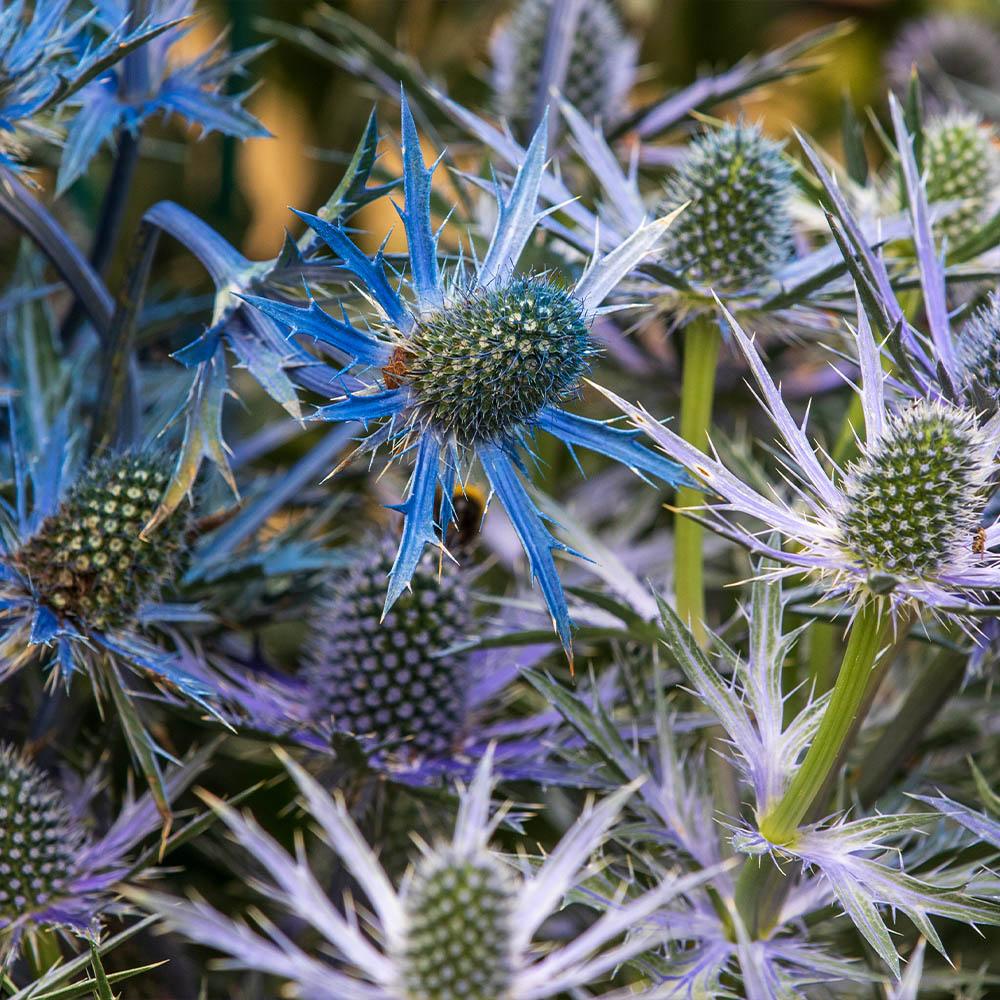
⑨
Eryngium x zabelii ‘Big Blue’
A striking herbaceous perennial with thimble-shaped flowerheads encircled by bristly, silvery–purple bracts on tall, upright stems, growing to 75cm tall. Ideal for planting in the middle of a sunny, well-drained border. Adds texture and colour to the landscape, attracts masses of bees, and flowers between July and August.

⑩
Salvia nemorosa ‘Caradonna’
A compact mound-forming perennial with rough, grey-green leaves and blue-black stems bearing upright racemes of violet-blue flowers from June to October. Salvia nemorosa ‘Caradonna’ is great for the front or middle of a sunny, Mediterranean themed border or planted in containers.
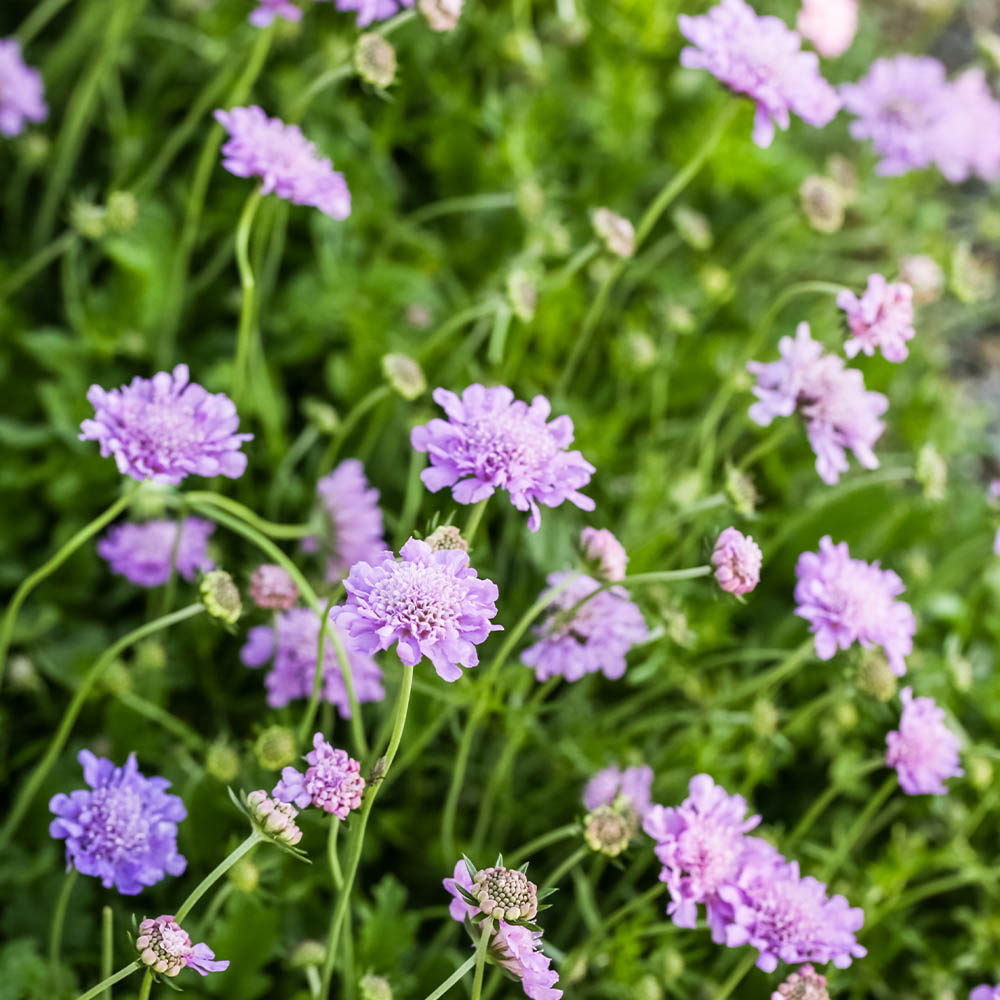
⑪
Scabiosa ‘Butterfly Blue’
A perennial featuring masses of soft lavender-blue pincushion flowers on slender stems. Its blooms attract butterflies, bees and other pollinators, and adds movement and colour to any landscape. It has a compact and bushy habit that forms a neat mound of foliage. Its long flowering period ensures continuous interest in the landscape. Thrives in well-drained soil and prefers full sun to partial shade, making it a versatile and low-maintenance addition to any landscape.
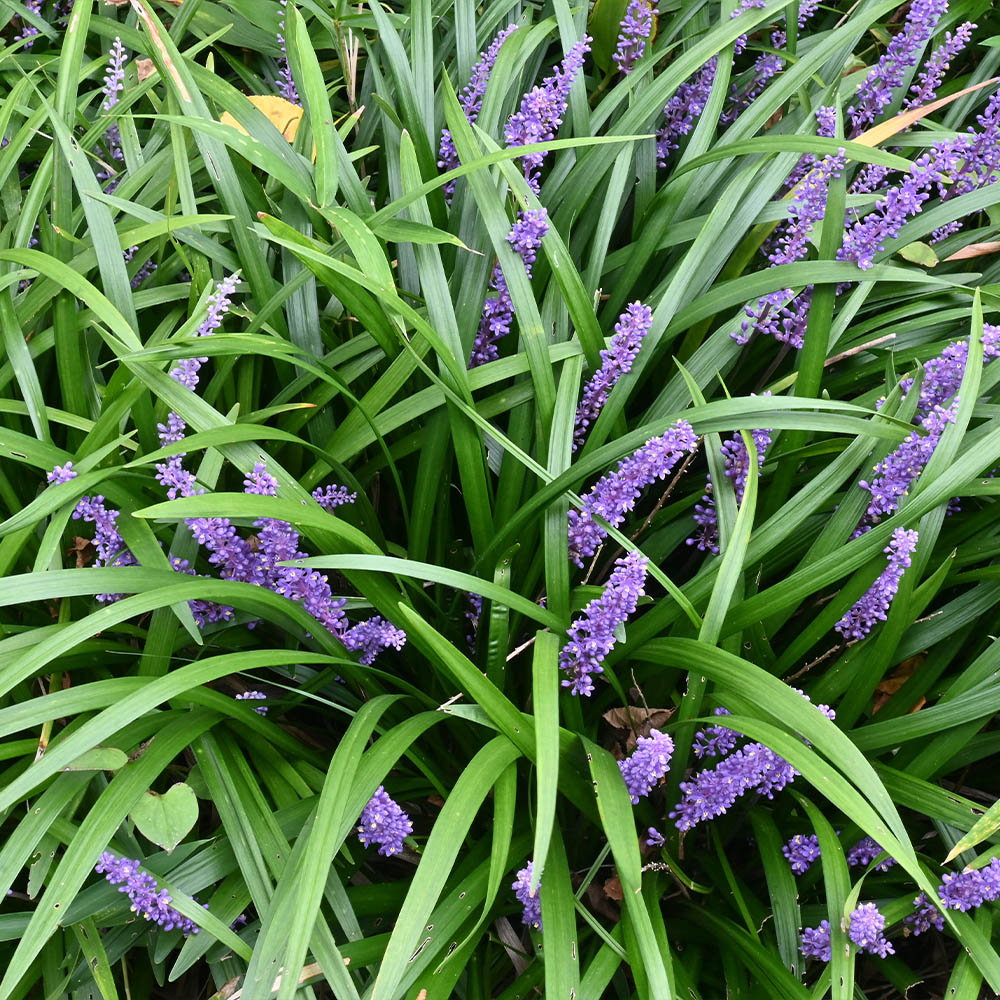
⑫
Liriope muscari
An evergreen grass with dense, tufted clumps of dark green leathery leaves. Adds a pop of colour in autumn with its spikes of blue-purple flowers, which are later followed by black berries.
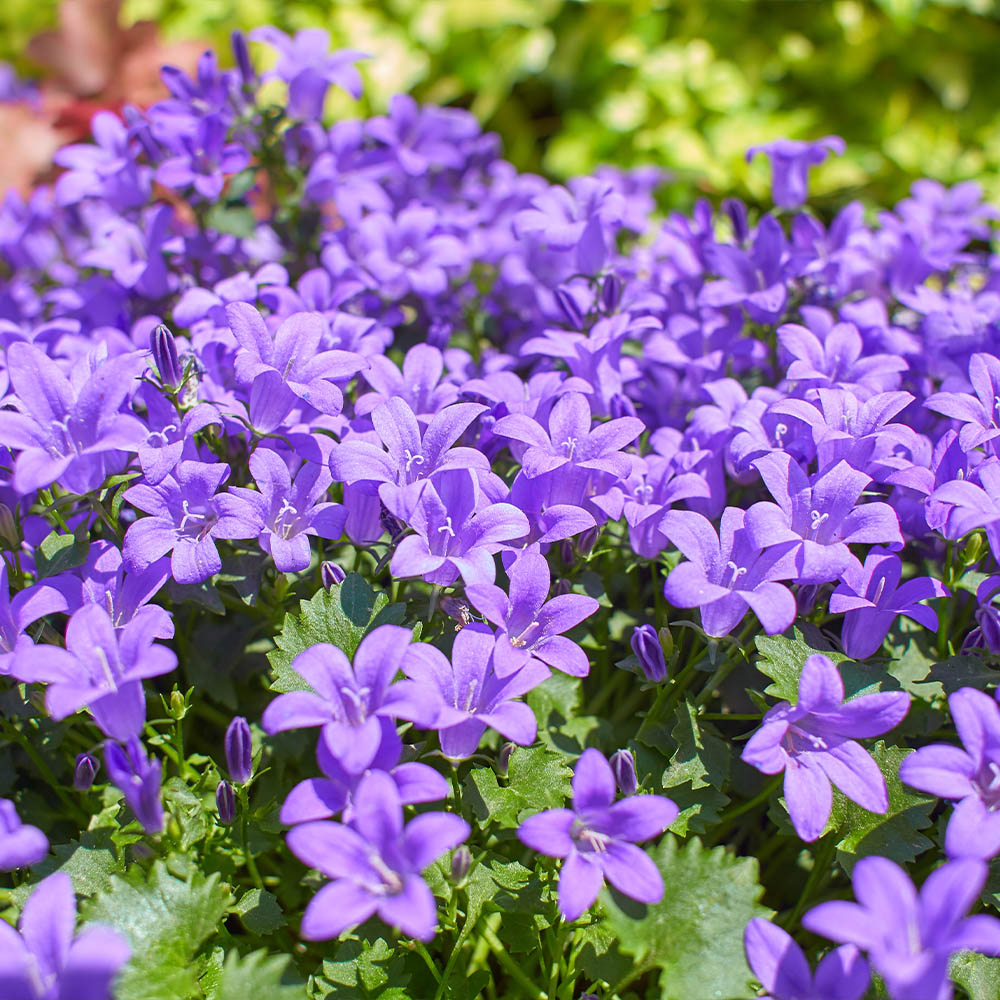
⑬
Campanula portenschlagiana
A mat forming perennial that grows quickly as a ground cover, and only grows to 15cm tall. It is ideal for adding interest to the front of borders for this reason. It prefers full sun or partial shade and well-drained soil, and flowers between July and August.

